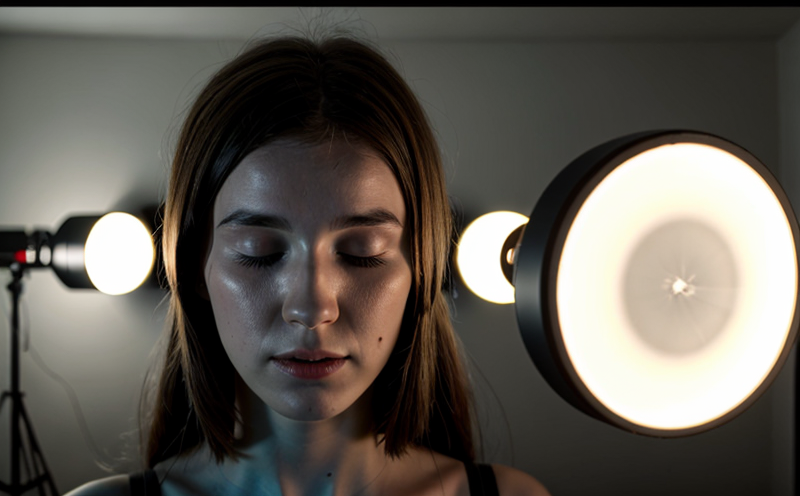ISO CIE 8995 Flicker Testing of Workplace Lighting Systems
The ISO/IEC Standard 8995 defines flicker as a variation in the luminous flux or light intensity that is perceived by an observer. This standard specifically addresses the measurement and evaluation of light flicker, which can cause discomfort, visual stress, and reduced productivity for occupants in various indoor environments.
Flicker testing is crucial for evaluating the performance of workplace lighting systems to ensure compliance with international standards. The test assesses whether a lamp or luminaire produces an unacceptable level of flicker that may affect human perception. This is particularly important in offices, hospitals, and other spaces where prolonged exposure to flickering light can lead to significant discomfort.
The testing process involves the use of specialized equipment capable of measuring both the perceived brightness variations (luminous flux) and the actual intensity variations over time. These measurements are then compared against predefined thresholds set forth in ISO/IEC 8995, which takes into account factors such as flicker frequency and amplitude.
During the testing procedure, the luminaire or lamp is placed under controlled conditions that mimic real-world use scenarios. The equipment records data on how much the light intensity fluctuates over time, allowing for accurate evaluation according to the standard's criteria. Compliance with these standards ensures that the lighting system does not produce flicker above acceptable levels.
Understanding the implications of flicker in workplace environments is essential because even small amounts can have noticeable effects on individuals exposed to it regularly. For example, studies show that continuous exposure to flickering light may lead to headaches, eye strain, and increased fatigue among workers. By ensuring compliance with ISO/IEC 8995 through rigorous testing, employers not only meet regulatory requirements but also contribute positively towards creating healthier working conditions.
The benefits extend beyond just meeting legal obligations; they include enhanced employee satisfaction and productivity. When employees are comfortable in their environment, they tend to perform better at tasks requiring visual acuity or concentration. Additionally, compliance helps businesses avoid potential liability issues related to health complaints stemming from poor lighting practices.
Why It Matters
- Flicker can significantly impact the comfort and well-being of occupants in any indoor space. Continuous exposure might result in discomfort, visual stress, and reduced productivity.
- Compliance with ISO/IEC 8995 ensures that lighting systems do not produce flicker above acceptable levels, thereby contributing to healthier working environments.
- By meeting these standards through thorough testing, businesses can enhance employee satisfaction and overall performance. Comfortable workers are more likely to be productive ones.
Eurolab Advantages
EuroLab offers comprehensive flicker testing services tailored specifically for workplace lighting systems adhering to ISO/IEC 8995. Our state-of-the-art facilities and experienced professionals ensure accurate measurements and reliable results.
- Our team of experts understands the nuances of this standard, providing precise evaluations that meet or exceed international requirements.
- We utilize advanced equipment capable of detecting even subtle flicker variations which might go unnoticed by less sophisticated tools.
- At EuroLab, we provide detailed reports summarizing our findings along with recommendations for improvement if necessary. These insights help clients make informed decisions about their lighting systems.





